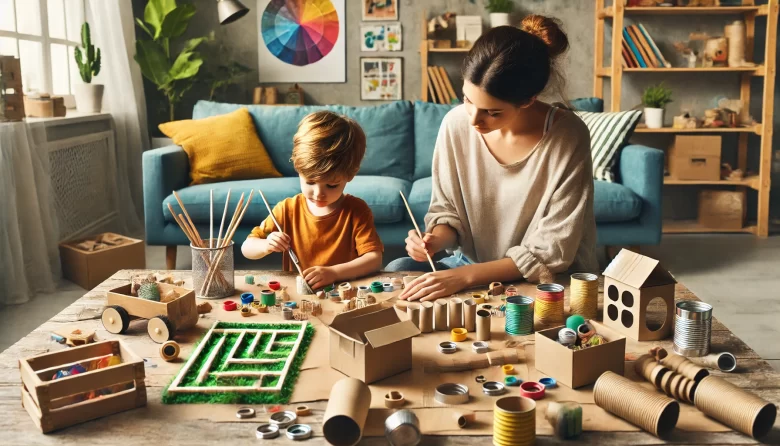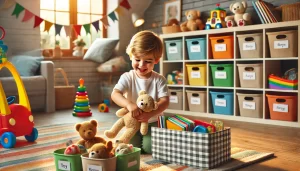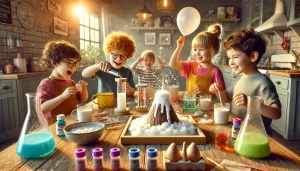Encouraging children to play with educational toys is a great way to stimulate creativity, problem-solving skills, and cognitive development. However, store-bought toys can be expensive, and many contain plastic materials that are not environmentally friendly. The good news is that you can create fun and educational toys at home using scrap materials. Not only is this a sustainable choice, but it also provides an opportunity for children to learn about recycling and resourcefulness.
In this guide, we will explore how to turn everyday household waste into exciting educational toys for children. You’ll find step-by-step instructions, tips for selecting materials, and suggestions for different types of toys based on learning objectives.
Benefits of Creating Educational Toys from Scrap Materials
Before we dive into the creative process, let’s explore why making toys from recycled materials is a great idea:
- Encourages Creativity – Children get to see how ordinary objects can be transformed into something fun and useful.
- Develops Fine Motor Skills – Cutting, gluing, painting, and assembling improve dexterity and coordination.
- Promotes Environmental Awareness – Kids learn about the importance of recycling and reducing waste.
- Saves Money – Instead of buying expensive toys, you can repurpose materials you already have.
- Enhances Problem-Solving Skills – Designing and constructing their own toys encourages critical thinking.
Now, let’s look at some simple and fun projects you can do with your child!
Cardboard Box Maze for Critical Thinking
Materials Needed:
- Old cardboard boxes (such as cereal or shoe boxes)
- Straws or popsicle sticks
- Glue
- Small marble or bead
Instructions:
- Cut the cardboard box to create a shallow tray.
- Use straws or popsicle sticks to form walls inside the tray, creating a maze.
- Glue the pieces in place and allow them to dry.
- Once dry, place a small marble at the start and let the child navigate it through the maze by tilting the box.
Educational Benefits:
- Enhances problem-solving skills
- Improves hand-eye coordination
- Teaches basic physics concepts like gravity and motion
Bottle Cap Counting Game for Early Math Skills
Materials Needed:
- Bottle caps
- Permanent marker
- A small container or egg carton
Instructions:
- Collect 10-20 bottle caps.
- Write numbers on each cap with a permanent marker.
- Draw corresponding dots on the inside of an egg carton.
- Have the child match the bottle caps to the correct section in the egg carton.
Educational Benefits:
- Helps with number recognition
- Improves counting skills
- Teaches one-to-one correspondence in early math
DIY Musical Instruments for Sound Exploration
Materials Needed:
- Empty tissue boxes or plastic containers
- Rubber bands
- Rice or beans
- Tape
Instructions:
For a guitar:
- Stretch rubber bands over an empty tissue box to create strings.
- Let the child strum and hear the different sounds.
For a shaker:
- Fill an empty plastic container with rice or beans.
- Seal it tightly with tape.
- Let your child shake it to explore rhythms and sounds.
Educational Benefits:
- Develops auditory skills
- Enhances musical exploration
- Improves rhythm and coordination
Toilet Paper Roll Binoculars for Imaginative Play
Materials Needed:
- Two empty toilet paper rolls
- Tape or glue
- String
- Colored paper or paint for decoration
Instructions:
- Tape or glue the two rolls together side by side.
- Punch holes on the sides and attach a string to create a strap.
- Decorate with paint or colored paper.
Educational Benefits:
- Encourages imaginative play
- Develops observation skills
- Supports role-playing activities
Sock Puppets for Language and Social Skills
Materials Needed:
- Old socks
- Buttons or googly eyes
- Fabric glue
- Yarn for hair
Instructions:
- Use buttons or googly eyes for the puppet’s face.
- Glue or sew on yarn to create hair.
- Encourage children to put on a puppet show.
Educational Benefits:
- Improves storytelling skills
- Encourages social interaction
- Enhances verbal communication
Tips for Making Educational Toys at Home
- Safety First: Ensure that all materials are safe for children, avoiding sharp objects or toxic substances.
- Encourage Participation: Let your child be part of the creation process to enhance their engagement.
- Keep It Simple: Educational toys don’t have to be complicated—sometimes, the simplest designs are the most effective.
- Make It Interactive: Allow children to experiment and change the toys to keep them engaged.
- Incorporate Learning Objectives: Think about what skill you want to develop with each toy, whether it’s math, creativity, or motor skills.
Final Thoughts
Making educational toys from scrap materials is not only an eco-friendly and budget-friendly option but also an excellent way to spend quality time with your child. By involving them in the process, you encourage curiosity, problem-solving, and creativity—valuable skills that will benefit them in all aspects of life.
So, next time you think about throwing away a cardboard box or a bottle cap, consider how you can transform it into an exciting learning tool. Get creative, have fun, and enjoy the endless possibilities of DIY educational toys!




